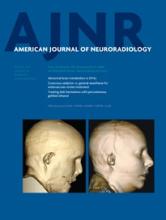Abstract
BACKGROUND AND PURPOSE: The differentiation between Parkinson disease and atypical parkinsonian syndromes can be challenging in clinical practice, especially in early disease stages. Brain MR imaging can help to increase certainty about the diagnosis. Our goal was to evaluate the added value of SWI in relation to conventional 3T brain MR imaging for the diagnostic work-up of early-stage parkinsonism.
MATERIALS AND METHODS: This was a prospective observational cohort study of 65 patients presenting with parkinsonism but with an uncertain initial clinical diagnosis. At baseline, 3T brain MR imaging with conventional and SWI sequences was performed. After clinical follow-up, probable diagnoses could be made in 56 patients, 38 patients diagnosed with Parkinson disease and 18 patients diagnosed with atypical parkinsonian syndromes, including 12 patients diagnosed with multiple system atrophy–parkinsonian form. In addition, 13 healthy controls were evaluated with SWI. Abnormal findings on conventional brain MR imaging were grouped into disease-specific scores. SWI was analyzed by a region-of-interest method of different brain structures. One-way ANOVA was performed to analyze group differences. Receiver operating characteristic analyses were performed to evaluate the diagnostic accuracy of conventional brain MR imaging separately and combined with SWI.
RESULTS: Disease-specific scores of conventional brain MR imaging had a high specificity for atypical parkinsonian syndromes (80%–90%), but sensitivity was limited (50%–80%). The mean SWI signal intensity of the putamen was significantly lower for multiple system atrophy–parkinsonian form than for Parkinson disease and controls (P < .001). The presence of severe dorsal putaminal hypointensity improved the accuracy of brain MR imaging: The area under the curve was increased from 0.75 to 0.83 for identifying multiple system atrophy–parkinsonian form, and it was increased from 0.76 to 0.82 for identifying atypical parkinsonian syndromes as a group.
CONCLUSIONS: SWI improves the diagnostic accuracy of 3T brain MR imaging in the work-up of parkinsonism by identifying severe putaminal hypointensity as a sign indicative of multiple system atrophy–parkinsonian form.
ABBREVIATIONS:
- AP
- atypical parkinsonian syndromes
- AUC
- area under the curve
- CBS
- corticobasal syndrome
- DLB
- dementia with Lewy bodies
- HC
- healthy controls
- MSA
- multiple system atrophy
- MSA-P
- multiple system atrophy–parkinsonian form
- PD
- Parkinson disease
- PSP
- progressive supranuclear palsy
- ROC
- receiver operating characteristic
- SI
- signal intensity
- © 2015 by American Journal of Neuroradiology












